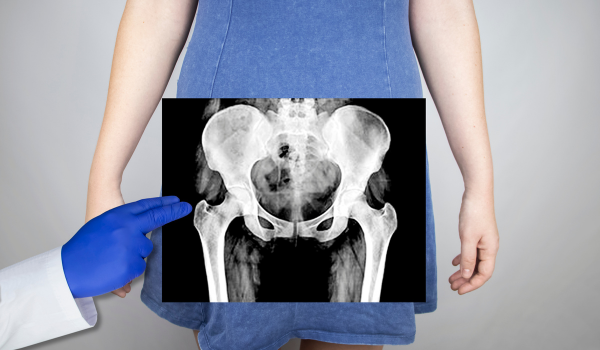.png)
Why Treatment Matters
May-Thurner Syndrome (MTS) is a vascular condition where the right iliac artery compresses the left iliac vein, disrupting blood flow and increasing the risk of deep vein thrombosis (DVT). While some individuals with MTS remain asymptomatic, others experience painful and potentially dangerous symptoms that demand medical intervention.
Proper treatment can relieve symptoms, prevent clots, and restore normal circulation. The key lies in choosing the right therapy for each patient's anatomy, symptoms, and risk level.
Initial Diagnosis
Before discussing treatment, it's essential to confirm the diagnosis. MTS is diagnosed through:
-
Doppler ultrasound
-
CT or MR venography
-
Intravascular ultrasound (IVUS)
-
Conventional venography
These tests assess the degree of compression, identify blood clots, and help determine the most appropriate intervention strategy.
Non-Surgical Management
In patients with mild symptoms or early-stage MTS, non-surgical approaches may suffice, including:
-
Compression stockings: Help promote blood flow and reduce swelling
-
Leg elevation: Encourages venous return
-
Lifestyle changes: Avoid prolonged sitting or standing, stay active
-
Anticoagulants: Prevent clot formation in high-risk patients
While these methods won’t fix the anatomical compression, they can help manage symptoms and prevent progression in less severe cases.
Anticoagulation Therapy
If MTS is diagnosed due to or alongside a DVT, anticoagulation is typically the first line of treatment. Common medications include:
-
Warfarin (Coumadin)
-
Direct oral anticoagulants (DOACs) like rivaroxaban or apixaban
-
Low-molecular-weight heparin (in pregnancy or cancer)
Treatment typically lasts 3 to 6 months, though longer courses may be needed in patients with ongoing risk factors. Anticoagulants reduce the risk of clot expansion and pulmonary embolism but don’t resolve the underlying vein compression.
Catheter-Directed Thrombolysis
For patients with significant or recent DVT caused by MTS, especially if symptoms are severe, catheter-directed thrombolysis may be used. This minimally invasive procedure involves:
-
Inserting a catheter into the vein
-
Delivering clot-dissolving medications directly to the thrombus
-
Sometimes combining with mechanical clot removal
This method reduces clot burden, preserves vein function, and prepares the vein for potential stenting.
Balloon Angioplasty
Once the clot is cleared, the next step often involves balloon angioplasty—a procedure where a balloon-tipped catheter is inserted into the compressed section of the vein and inflated to open the narrowing.
Benefits include:
-
Immediate restoration of blood flow
-
Minimally invasive technique
-
Prepares the vein for stent placement
However, balloon angioplasty alone may not prevent re-narrowing due to persistent external compression, so it is frequently followed by stent placement.
Stent Placement
Stenting is the most commonly used long-term solution for MTS. A self-expanding metal stent is placed in the compressed iliac vein to keep it open permanently.
Key advantages:
-
Minimally invasive, performed via catheter
-
Immediate symptom relief for most patients
-
Low recurrence of DVT when combined with anticoagulation
Recovery time is short, and most patients can resume normal activities within a few days. Periodic imaging follow-up ensures the stent remains open and functional.
Surgical Options
In rare or complex cases where endovascular methods fail or are unsuitable, surgical intervention may be necessary. These include:
-
Vein patch angioplasty: The compressed vein is opened and patched with a graft to enlarge it.
-
Bypass surgery: A detour is created using a vein or synthetic graft to reroute blood around the obstruction.
-
Endovenectomy: Surgical removal of fibrous tissue within the vein.
These options carry higher risks, longer recovery times, and are usually reserved for patients with failed stents or anatomical anomalies.
Hybrid Approaches
Some patients require a combination of procedures. A hybrid approach may involve:
-
Thrombolysis for clot removal
-
Balloon angioplasty to dilate the narrowed vein
-
Stenting for long-term support
This tiered method ensures the vein is clear of clot, open to flow, and protected against future compression.
Pregnancy Considerations
Pregnant patients with MTS require special care. Treatment focuses on minimizing clot risk while ensuring maternal and fetal safety:
-
Compression stockings are safe and commonly recommended
-
Anticoagulation with low-molecular-weight heparin is preferred
-
Stenting is generally postponed until after delivery, unless symptoms are severe
Postpartum evaluation is critical, as vein compression can worsen after childbirth.
Post-Treatment Care
After any procedure, patients need continued care to ensure success and avoid recurrence. This includes:
-
Regular follow-up with vascular specialists
-
Duplex ultrasounds to monitor stent patency
-
Ongoing anticoagulation as needed
-
Avoiding extended immobility
-
Wearing compression garments
Good adherence to post-treatment care greatly reduces complications and promotes long-term vein health.
Monitoring for Complications
Despite treatment, some complications may still arise:
-
Stent re-narrowing (in-stent restenosis)
-
Stent migration
-
Bleeding complications from anticoagulants
-
Recurrence of DVT
Prompt follow-up ensures these issues are addressed early. Patients should report any sudden leg swelling, pain, or skin discoloration immediately.
Patient Outcomes
Treatment outcomes for MTS are generally excellent. Most patients experience:
-
Rapid symptom improvement
-
Increased mobility and quality of life
-
Reduced risk of future DVTs
-
Restoration of normal vein function
Studies show that stenting has a long-term patency rate of over 80%, particularly when combined with medical management and follow-up imaging.
When to Seek Treatment
Anyone with persistent or unexplained left leg swelling, especially after a DVT, should be evaluated for MTS. Prompt treatment is recommended for:
-
Significant symptoms affecting daily life
-
History of recurrent DVT
-
Confirmed anatomical vein compression on imaging
Early intervention reduces complications and improves long-term prognosis.
Lifestyle Modifications
Even after successful treatment, maintaining healthy circulation remains important. Patients should:
-
Stay physically active
-
Avoid prolonged sitting or standing
-
Stay hydrated
-
Manage weight
-
Use leg elevation when possible
Lifestyle changes reduce pressure on the veins and enhance treatment durability.
Alternative Therapies
While no herbal or alternative therapy can cure MTS, supportive treatments may complement medical care:
-
Massage therapy (with caution) to improve lymphatic flow
-
Aquatic therapy for low-impact exercise
-
Nutrition to support vascular health (omega-3s, antioxidants)
Always consult a physician before starting any alternative treatment, especially when on anticoagulants.
Mental Health Support
Living with a chronic vascular condition or facing repeated clotting episodes can be emotionally taxing. Patients may benefit from:
-
Psychological counseling
-
Support groups for DVT or vascular disorders
-
Stress-reducing practices like meditation or yoga
Addressing emotional well-being is a vital aspect of full recovery.
Insurance and Costs
The cost of MTS treatment varies depending on location, insurance, and procedure type. Patients should:
-
Check insurance coverage for stenting and imaging
-
Inquire about outpatient vs. inpatient options
-
Seek financial counseling if cost is a concern
Delaying treatment due to financial issues can lead to more expensive emergency care in the future.
Conclusion
May-Thurner Syndrome is a treatable condition with a wide range of options—from conservative management and anticoagulation to advanced interventions like stenting and surgery. Thanks to modern vascular techniques, most patients experience significant relief and return to normal life.
Choosing the right treatment involves evaluating symptoms, risks, anatomy, and personal health goals. With early diagnosis and a tailored plan, MTS doesn’t have to disrupt your life.

.png)
.png)
.png)
.png)
.png)
.png)
.png)
.png)



